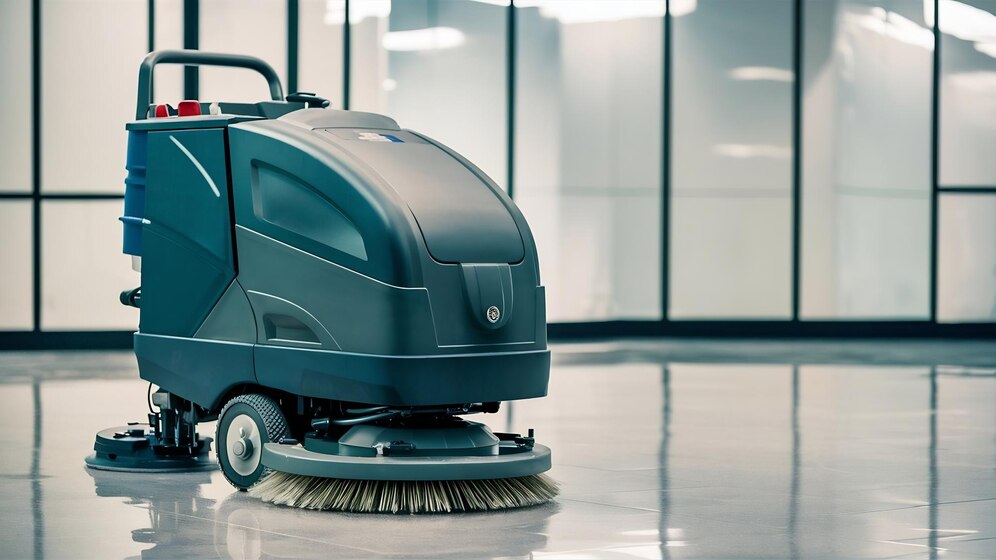
Common Mistakes to Avoid When Using Battery Floor Scrubbers
Battery floor scrubbers are a top choice for businesses and facilities looking to keep their floors spotless without the hassle of cumbersome cords. But like any piece of machinery, there are certain pitfalls you want to avoid to ensure you're getting the most out of your investment. Let’s dive deep into some of the common mistakes folks make when using battery floor scrubbers and how you can steer clear of them for optimal performance and longevity.
Understand Your Battery Type
The first and perhaps most crucial step in avoiding mistakes with battery floor scrubbers is understanding the type of battery your machine uses. There are a few types of batteries commonly used, each with its specific characteristics.
Lead Acid or Wet Cell Batteries
- Maintenance: These batteries need regular maintenance, such as checking water levels and ensuring terminals are clean and corrosion-free. Neglecting these can lead to impaired performance and a shortened lifespan.
- Performance: Be mindful that these batteries can develop a 'memory' if not fully discharged before recharging, affecting your scrubber's runtime.
- Charge Time: They typically require a 6 to 8-hour charge to reach full capacity.
Avoid the error of neglecting maintenance. Regular checks can prevent costly repairs and ensure your scrubber is ready when you need it.
Gel or AGM Batteries
- Maintenance-Free: One significant advantage here is the lack of maintenance required. No need for water checks means fewer hassles, but it doesn’t mean you can completely ignore them.
- No Memory Effect: Unlike lead acid batteries, these won’t retain a memory. However, ensure they are fully charged to maintain efficiency.
Despite being more user-friendly, many make the mistake of not respecting the charging cycle which can impact lifespan.
Lithium-Ion Batteries
- Advanced Performance: Lightweight and highly efficient, these are the most advanced options available. They are memory-free and charge much faster, typically in about 4 to 6 hours.
- Environmentally Friendly: Better for the planet, these batteries have a higher energy density and thus a longer lifespan.
One mistake here is underestimating the cost. While they offer numerous advantages, lithium-ion batteries can be more expensive initially, which some overlook when budgeting.
Practising Proper Charging Techniques
Believe it or not, a lot of the unforeseen issues with battery-operated scrubbers arise from improper charging practices!
When to Charge?
Recharge the battery when it falls below the 20% mark but before it reaches 0%. Allowing a complete discharge before recharging can severely shorten the lifespan of your battery.
Avoiding Partial Charging
It might seem convenient to quickly top off a battery that's partially drained. While this is fine occasionally, making a routine habit of it could eventually affect overall battery health. Always aim for a full 100% charge during scheduled recharges.
Regular Maintenance is Key
Regular maintenance isn't just for the batteries; the machine itself needs attention to continue performing optimally.
Keep an Eye on Terminal Health
A quick inspection of the battery terminals for corrosion and loose connections is vital. Ensuring that connections are snug prevents energy loss.
Wet Battery Water Levels
If you're using wet flooded batteries, make sure you’re checking the water levels at least weekly. Allowing the batteries to dry out is a rookie mistake that can be easily dodged.
General Machine Hygiene
Your scrubber’s performance deteriorates when grime accumulates on its components. Clean it regularly and check the brushes, pads, and squeegee blades for wear and tear.
Comparing with Corded Floor Scrubbers
Battery floor scrubbers come with significant advantages over their corded counterparts, primarily in maneuverability and ease of use. Without the hassle of cords, they are safer and much more versatile, especially in large open spaces. However, understanding the specific battery nuances ensures they match or outperform the traditional models in efficiency and reliability.
Corded Scrubber Limitations
Corded scrubbers, while steady in power supply, are restricted by their cable's length and the availability of power outlets. This makes them less practical in sprawling commercial spaces, not to mention the added risk of tripping hazards.
Freedom of Battery-Powered Scrubbers
Despite higher upfront costs, battery floor scrubbers provide the freedom to clean expansive areas without interruption. They also reduce the risk of cable accidents, making them ideal for high-traffic areas.
Maximising Battery Floor Scrubber Efficiency
Usage Patterns and Run Time
Your usage habits play a crucial role in how effective and long-lasting your floor scrubbers are. Depending on the battery type and cleaning requirements, you can expect about 3 to 6 hours of operation per full charge. Ensure you’re aware of how your usage impacts this runtime to effectively schedule charging and cleaning times.
Choosing the Right Battery
- Cost Considerations: While lead acid batteries are initially cheaper, they might lead to higher maintenance costs. Lithium-ion options, though pricier, could save money in the long run through improved efficiency and longevity.
- Environmental and Efficiency Benefits: Opt for lithium-ion if your budget aligns with it. They are the most eco-friendly and offer the best power-to-weight ratio, perfect for facilities prioritizing sustainability.
Conclusion
Optimally utilising battery floor scrubbers means understanding your options, practicing proper maintenance, and being aware of operational habits that maximise efficiency. From choosing the right battery type to implementing best charging practices, every step you take adds to the lifespan and reliability of your scrubber. Consider upgrading or adjusting routines based on these insights for the best results. An informed approach guarantees not just a cleaner facility but also a more cost-effective and environmentally friendly cleaning solution.
